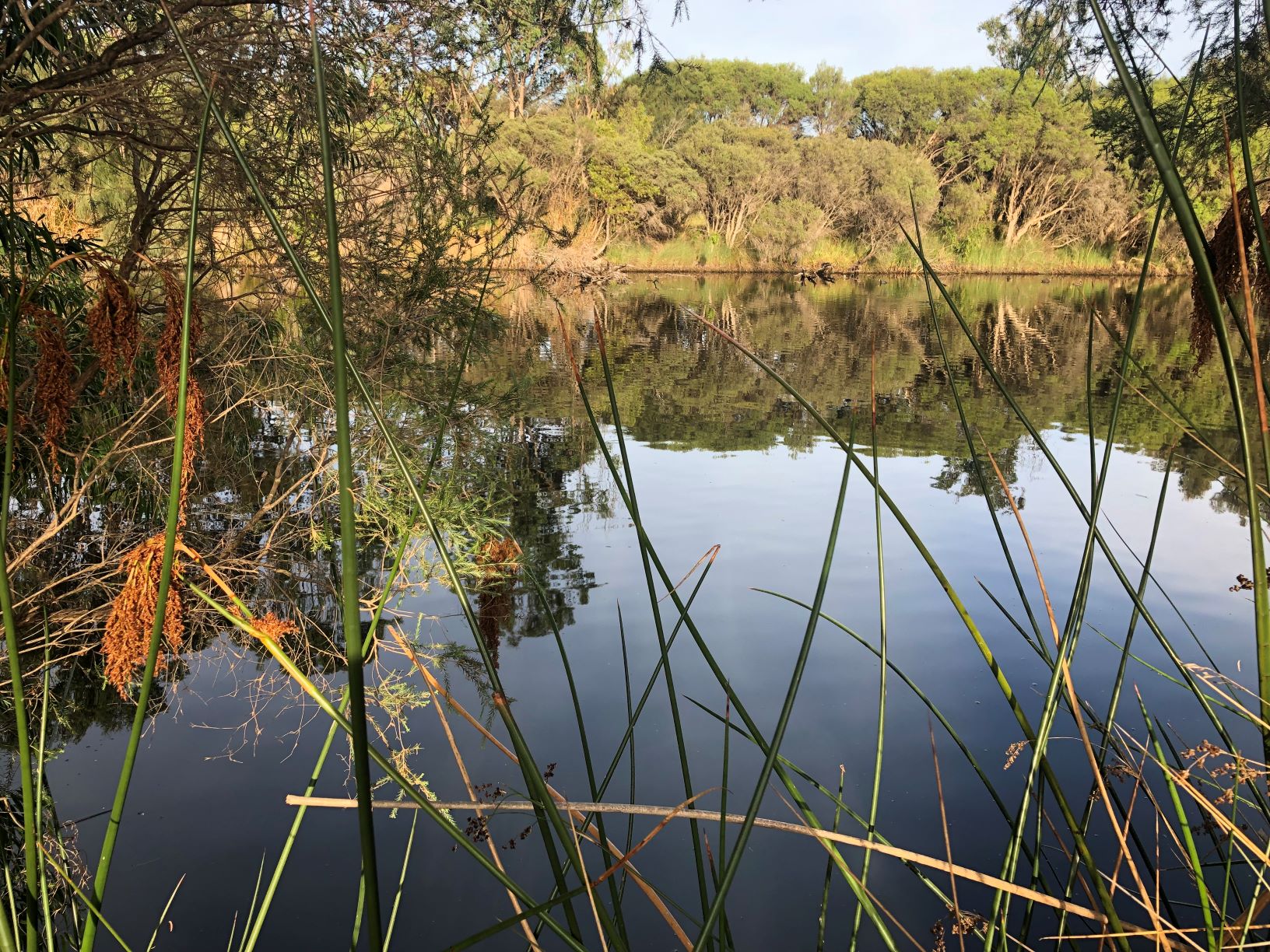Wetlands and Waterways
The City recognises the ecological, social and cultural importance of wetlands and waterways and is committed to working with its partners to improve local water quality and amenity. 
The internationally listed Vasse-Wonnerup wetlands, the Lower Vasse River and Toby Inlet have all been severely impacted by vegetation clearing, climate change and changes to land use.
Revitalising Geographe Waterways
As part of the Revitalising Geographe Waterways program, the City actively works with key stakeholders, including the State Government and the community to progress long term water quality improvement in Geographe waterways, including the Vasse-Wonnerup wetlands, Lower Vasse River and Toby Inlet.
Lower Vasse River and Toby Inlet
The City, in partnership with the community and key stakeholders prepared waterway management plans for the Lower Vasse River and Toby Inlet. The WMPs guide management of these waterways to achieve improved water quality and ecological health. Associated projects and research, which supported the development of the WMPs are available on the Revitalising Geographe Waterways website. More information on the Lower Vasse River management and improving its water quality can be found here.
Waterway Management Community Engagement
In 2020, the City of Busselton formed the Lower Vasse River Management Advisory Group (LVRMAG). The LVRMAG were instrumental in providing guidance in prioritising the recommendations of the Lower Vasse River Management Plan.
At the May 2023 Council Meeting, Council resolved to move towards an alternative community engagement model, with the aim of better engaging the broader community with waterway management issues in both the Lower Vasse River and Toby Inlet Catchment. Therefore, the LVRMAG was dissolved.
Information about waterway management engagement opportunities can be found via the City’s Your Say engagement platform.
Living Streams Concept Design
The ‘Living Streams’ concept is something that has been considered as a means of improving water quality in the Lower Vasse River for around a decade. It is a broad concept, but in simple terms would involve making physical changes to the River, including sediment removal and potentially creating water movement or circulation through artificial means.
Using funds allocated by the State Government through the Revitalising Geographe Waterways 2, programme, a concept design was completed by a firm called Alluvium in August 2021. The key objective for the work was to identify means by which the frequency, duration and intensity of summertime blue-green algal / cyanobacterial blooms could be reduced.
The design recommends the staged implementation of:
- Removal of sediment to take out accumulated nutrients and dormant cyanobacteria from the river bed;
- Recirculation of river water through one or two off-stream treatment wetland(s) to shade out cyanobacteria and filter nutrients; and
- Construction of in-stream vegetated structures to reduce water volume in the river and create wetland habitat.
Design Report - Living Streams concept design for the Lower Vasse River
Living Streams Concept Drawings for the Lower Vasse River
Toxic Algal Blooms in the Lower Vasse River
Peer Review
The concept design was peer reviewed by the Australian Rivers Institute (Griffith University). The purpose of the peer review was to look at the science around how to reduce the severity of algal blooms, the strengths and weaknesses of the concept design and then offer suggestions for improvement.
Alluvium was then offered the opportunity to respond to the peer review (which is standard practice for peer reviews). The peer review identified a range of issues requiring further consideration, but provided support for continued sediment removal work.
As a result of the work undertaken to date, the City has been focusing as a priority on sediment removal in the river. Outcomes of sediment removal will be reviewed and evaluated prior to progressing to any further work. Importantly, at this stage the City has not decided whether any future stages of the Living Streams concept design will be implemented.
The Living Streams Concept Design documents (Alluvium, August 2021), Living Streams Concept peer review (Hamilton et al., June 2022) and Living Streams Design for the Lower Vasse River – Peer Review (Alluvium, October 2022) are available for viewing below.
Living Streams Concept peer review (Griffiths University)
Living Streams Design for the Lower Vasse River - Peer Review Response (Alluvium)
Living Streams Design for the Lower Vasse River - Peer Review Response (Professor Barry Hart)
Stormwater Upgrades
The City routinely upgrades stormwater systems (by implementing Water Sensitive Urban Design) to reduce the amount of nutrients and pollutants entering our waterways. Numerous rain gardens have been installed throughout the District, leading to significant water quality improvements.
Report Fish Kills
If you see a fish kill (large number of dead fish in the aquatic environment), please report it immediately to FishWatch on 1800 815 507.
Vasse Taskforce
The Vasse Taskforce is made up of 9 representatives from relevant organisations that provides strategic direction and support to the lead agencies responsible for delivering on projects relating to water quality problems in the Geographe Catchment. Their goal is to improve the management of key water assets.
Related Information
Lower Vasse River Waterway Management Plan
Toby Inlet Waterway Management Plan
Waterway Management - Your Say Busselton